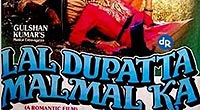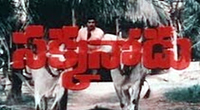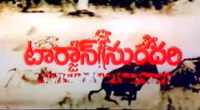This article has multiple issues. Please help improve it or discuss these issues on the talk page. (Learn how and when to remove these template messages)
(Learn how and when to remove this template message)
|

Slash-and-burn agriculture, or fire–fallow cultivation, is a farming method that involves the cutting and burning of plants in a forest or woodland to create a field called a swidden. (preparing fields by deforestation is called assarting). In subsistence agriculture, slash-and-burn typically uses little technology. It is often applied in shifting cultivation agriculture (such as in the Amazon rainforest) and in transhumance livestock herding.
Slash-and-burn is used by 200–500 million people worldwide. In 2004 it was estimated that in Brazil alone, 500,000 small farmers each cleared an average of one hectare (2.47105 acres) of forest per year. The technique is not scalable or sustainable for large human populations. Methods such as Inga alley farming have been proposed as alternatives which would cause less environmental degradation.
Contents
History
Historically, slash-and-burn cultivation has been practiced throughout much of the world, in grasslands as well as woodlands.
During the Neolithic Revolution, which included agricultural advancements, groups of hunter-gatherers domesticated various plants and animals, permitting them to settle down and practice agriculture, which provides more nutrition per hectare than hunting and gathering. This happened in the river valleys of Egypt and Mesopotamia. Due to this decrease in food from hunting, as human populations increased, agriculture became more important. Some groups could easily plant their crops in open fields along river valleys, but others had forests blocking their farming land.
In this context, humans used slash-and-burn agriculture to clear more land to make it suitable for plants and animals. Thus, since Neolithic times, slash-and-burn techniques have been widely used for converting forests into crop fields and pasture. Fire was used before the Neolithic as well, and by hunter-gatherers up to present times. Clearings created by the fire were made for many reasons, such as to draw game animals and to promote certain kinds of edible plants such as berries.
Slash-and-burn fields are typically used and owned by a family until the soil is exhausted. At this point the ownership rights are abandoned, the family clears a new field, and trees and shrubs are permitted to grow on the former field. After a few decades, another family or clan may then use the land and claim usufructuary rights. In such a system there is typically no market in farmland, so land is not bought or sold on the open market and land rights are traditional. In slash-and-burn agriculture, forests are typically cut months before a dry season. The "slash" is permitted to dry and then burned in the following dry season. The resulting ash fertilizes the soil and the burned field is then planted at the beginning of the next rainy season with crops such as upland rice, maize, cassava, or other staples. Most of this work is typically done by hand, using such basic tools such as machetes, axes, hoes, and makeshift shovels. The old American civilizations, like the Inca, Maya, and Aztecs, also used this old agricultural technique.
Large families or clans wandering in the lush woodlands long continued to be the most common form of life through human prehistory. Axes to fell trees and sickles for harvesting grain were the only tools people might bring with them. All other tools were made from materials they found at the site, such as fire stakes of birch, long rods (Vanko), and harrows made of spruce tops. The extended family conquered the lush virgin forest, burned and cultivated their carefully selected swidden plots, sowed one or more crops, and then proceeded on to forests that had been noted in their wanderings. In the temperate zone, the forest regenerated in the course of a lifetime. So swidden was repeated several times in the same area over the years. But in the tropics the forest floor gradually depleted. It was not only in the moors, as in Northern Europe, but also in the steppe, Savannah, prairie, pampas and barren desert in tropical areas where shifting cultivation is the oldest type of farming. Cultivation is similar to slash-and-burn. (Clark 1952 91–107).
Historical references
Southern European Mediterranean climates have favored evergreen and deciduous forests. With slash-and-burn agriculture, this type of forest was less able to regenerate than those north of the Alps. Although in northern Europe one crop was usually harvested before grass was allowed to grow, in southern Europe it was more common to exhaust the soil by farming it for several years.
Classical authors mentioned large forests, with Homer writing about "wooded Samothrace," Zakynthos, Sicily, and other woodlands. These authors indicated that the Mediterranean area once had more forest; much had already been lost, and the remainder was primarily in the mountains.
Although parts of Europe aside from the north remained wooded, by the Roman Iron and early Viking Ages, forests were drastically reduced and settlements regularly moved. The reasons for this pattern of mobility, the transition to stable settlements from the late Viking period on, or the transition from shifting cultivation to stationary farming are unknown. From this period, plows are found in graves. Early agricultural peoples preferred good forests on hillsides with good drainage, and traces of cattle enclosures are evident there.
In Italy, shifting cultivation was a thing of the past by the birth of Christ. Tacitus describes it as a strange cultivation method, practiced by the Germans. In 98 AD, he wrote about the Germans that their fields were proportional to the participating cultivators but their crops were shared according to status. Distribution was simple, because of wide availability; they changed fields annually, with much to spare because they were producing grain rather than other crops. According to the original text, "Agri pro numero cultorum ab universis in vices occupantur, quos mox inter se secundum dignationem partiuntur, facilitatem partiendi camporum spatia praestant. Arva per annos mutant, et superest ager; nec enim cum ubertate et amplitudine soli labore contendunt, ut pomaria conserant et prata separent et hortos rigent; sola terrae seges imperatur." This is the practice of shifting cultivation.
During the Migration Period in Europe, after the Roman Empire and before the Viking Age, the peoples of Central Europe moved to new forests after exhausting old parcels. Forests were quickly exhausted; the practice had ended in the Mediterranean, where forests were less resilient than the sturdier coniferous forests of Central Europe. Deforestation had been partially caused by burning to create pasture. Reduced timber delivery led to higher prices and more stone construction in the Roman Empire (Stewart 1956, p. 123). Although forests gradually decreased in northern Europe, they have survived in the Nordic countries.
Tribes in pre-Roman Italy (including the Etruscans, Umbrians, Ligurians, Sabines, Latins, Campanians, Apulians, Saliscans, and Sabellians) apparently lived in temporary locations. They cultivated small patches of land, kept sheep and cattle, traded with foreign merchants, and occasionally fought. These Italic groups developed identities as settlers and warriors around 900 BC. They built forts in the mountains which are studied today, as are the ruins of a large Samnite temple and theater at Pietrabbondante.
Many Italic peoples saw benefits in allying with Rome. When the Romans built the Via Amerina in 241 BC, the Falisci settled in cities on the plains and aided the Romans in road construction; the Roman Senate gradually acquired representatives from Faliscan and Etruscan families, and the Italic tribes became settled farmers.[19]
Classical writers described peoples who practiced shifting cultivation, which characterized the Migration Period in Europe. The exploitation of forests demanded displacement as areas were deforested. Julius Caesar wrote about the Suebi in Commentarii de Bello Gallico 4.1, "They have no private and secluded fields ("privati ac separati agri apud eos nihil est") ... They cannot stay more than one year in a place for cultivation’s sake" ("neque longius anno remanere uno in loco colendi causa licet"). The Suebi lived between the Rhine and the Elbe. About the Germani, Caesar wrote: "No one has a particular field or area for himself, for the magistrates and chiefs give year by year to the people and the clans, who have gathered together, as much land and in such places as seem good to them and then make them move on after a year" ("Neque quisquam agri modum certum aut fines habet proprios, sed magistratus ac principes in annos singulos gentibus cognationibusque hominum, qui tum una coierunt, a quantum et quo loco visum est agri attribuunt atque anno post alio transire cogunt" [Book 6.22]).
Strabo (63 BC—c. 20 AD) also writes about the Suebi in his Geography (VII, 1, 3): "Common to all the people in this area is that they can easily change residence because of their sordid way of life; they do not cultivate fields or collect property, but live in temporary huts. They get their nourishment from their livestock for the most part, and like nomads, pack all their goods in wagons and go on to wherever they want". Horace writes in 17 BC (Carmen Saeculare, 3, 24, 9ff.) about the people of Macedonia: "The proud Getae also live happily, growing free food and cereal for themselves on land they do not want to cultivate for more than a year" ("Vivunt et rigidi Getae, / immetata quibus iugera liberas / fruges et Cererem ferunt, / nec cultura placet longior annua").
Jordanes, of Gothic descent, became a monk in Italy. In his mid-sixth-century AD Getica (De origine actibusque Getarum; The Origin and Deeds of the Goths)[20],[21] he described the large island of Scandza, on which the Goths originated. According to Jordanes, of the tribes living there, some are Adogit from within 40 days of the midnight sun. After the Adogit were the Screrefennae and Suehans, who also lived in the north. The Screrefennae did not raise crops, instead hunting and collecting bird eggs. The Suehans, a semi-nomadic tribe with good horses (comparable to the Thuringii), hunted furs to sell; grain could not be grown so far north. In about 550 AD, Procopius also described a primitive hunting people he called "Skrithifinoi": "Both men and women engaged incessantly just in hunting the rich forests and mountains, which gave them an endless supply of game and wild animals."[citation needed]
The use of fire in northeastern Sweden changed as agriculture evolved. Although the Sami people did not burn land (since burning killed the lichen required by their reindeer), later farmers frequently used slash-and-burn techniques. The 19th-century Swedish timber industry moved north, clearing the land of trees but leaving waste behind as a fire risk; during the 1870s, fires were frequent.[22] There was a fire in Norrland in 1851, followed by fires in 1868 and 1878; two towns were lost in 1888.[23]
Forest Finns

Request Movie Now
Watch movie Jhoom online on Amazon
Watch movie Jhoom online
Watch The Movie On PrimeLal Dupatta Malmal Ka Full HD Movie Download

Aaja Meri Jaan Full HD Movie Download

Veera Madakari Full HD Movie Download

Isi Ka Naam Zindagi Full HD Movie Download

Mawaali Full HD Movie Download

Chhota Sa Ghar Full HD Movie Download

Game Full HD Movie Download

Gunahon Ka Faisla Full HD Movie Download

Haage Summane Full HD Movie Download

Romeo Full HD Movie Download

Kempegowda Full HD Movie Download

Sakkanodu Full HD Movie Download

Kalpana Full HD Movie Download

Harry Potter and the Prisoner of Azkaban Full HD Movie Download

Unnikale Oru Kadha Parayam Full HD Movie Download

Mee Kosam Full HD Movie Download

Pranam Full HD Movie Download

Mayajalam Full HD Movie Download

Tarzan Sundari Full HD Movie Download

Lafangey Parindey Full HD Movie Download

Sawaal (1982) Full HD Movie Download
.jpg)
Download latest Movie from bollywood
- 1> baaghi 3
- 2> THE SKY IS PINK MOVIE FULL STORY AND REVIEW
- 3> Luka Chuppi
- 4> TO ALL THE BOYS I’VE LOVED BEFORE
- 5> Kabir Singh
- 6> Street Dancer 3D
- 7> Simmba
- 8> Gone Girl
- 9> The Girl Who Lived
- 10> Ludo
- 11> DILWALE DULHANIA LE JAYENGE
- 12> GUILTY
- 13> The Godfather
- 14> Adventures of Rusty
- 15> Sooryavanshi
- 16> Satyameva Jayate 2
- 17> Thappad
- 18> Bhool Bhulaiyaa 2
- 19> KGFChapter 2
- 20> Mardaani 2
- 21> Pinjar
- 22> Shivaji maharaj
- 23> Ek Villian 2
- 24> Hungama 2
- 25> Divergent
- 26> Mumbai Saga
- 27> The Internship
- 28> HIT (telugu)
- 29> Panga
- 30> The perfect date
- 31> 16 December
- 32> Gopala Gopala (Telugu)
- 33> Brahmastra
- 34> Gangubai Kathiawadi
- 35> Manmadhudu
- 36> Nenu local
- 37> Mahanati
- 38> Shatamanam bavathi
- 39> Lagaan
- 40> After
- 41> MOM
- 42> Shamshera
- 43> Raguvaran BTech
- 44> Khakee
- 45> The villain
- 46> OM
- 47> Mr. perfect
- 48> Bueatifull mind
- 49> Hichki
- 50> Gabbar Singh
- 51> Jogi
- 52> Before Sunrise
- 53> Before Sunset
- 54> Before Midnight
- 55> The Big Bull
- 56> Top Gun: Maverick
- 57> The Purge
- 58> The Sky is Pink
- 59> Laxmmi Bomb
- 60> Sadak 2
- 61> Sufna
- 62> Prithviraj
- 63> PK
- 64> Coolie No 1(2020)
- 65> Black Widow
- 66> Dear Zindagi
- 67> Dil Bechara
- 68> PHIR HERA PHERI
- 69> WAR
- 70> Dostana
- 71> RRR: Roudram Ranam Rudhiram
- 72> Maidan
- 73> Dabbang 3
- 74> Chhalaang
- 75> life as we know it
- 76> SherShaah
- 77> Sandeep Aur Pinky Faraar
- 78> Event Horizon
- 79> 83
- 80> Radhe: Your Most Wanted Bhai
- 81> Gunjan Saxena: The Kargil Girl
- 82> Mr India
- 83> Vivah
- 84> Anokha Bandhan
- 85> Ghost
- 86> Bhoot: Part One - The Haunted Ship
- 87> Haseen Dilruba
- 88> Laal Singh Chaddha
- 89> Qismat
- 90> Rajput
- 91> Drive
- 92> Dil Chahta Hai
- 93> Dil Ki Baazi
- 94> Dil Ka Rishta
- 95> Teesri Manzil
- 96> Dil
- 97> Love Aaj Kal
- 98> Khaali Peeli
- 99> Bunty Aur Babli 2
- 100> Atrangi Re
- 101> Gulabo Sitabo
- 102> Jodi
- 103> Suraj Pe Mangal Bhari
- 104> Deewana
- 105> Attack
- 106> Sardar Udham Singh
- 107> Toofan
- 108> THE LOVEBIRDS
- 109> Jersey
- 110> Ginny Weds Sunny
- 111> Thalaivi
- 112> Shiddat
- 113> Angels vs Zombies
- 114> Koi Mil Gya
- 115> Thank God
- 116> Bhuj: The Pride of India
- 117> Hum Aapke Hain Kaun
- 118> The Platform
- 119> Bird Box
- 120> Roohi Afzana
- 121> Torbaaz
- 122> Nikamma
- 123> World War Z
- 124> Extraction
- 125> Train to Busan
- 126> Life of Pi
- 127> SHAADI MEIN JROOR AANA
- 128> Himmat Aur Mehnat
- 129> To All The Boys: P.S. I Still Love You
- 130> Mimi
- 131> Good Newwz
- 132> Shubh Mangal Zyada Saavdhan
- 133> Raabta
- 134> Harry Potter and the Philosopher's Stone
- 135> Harry Potter and the Chamber of Secrets
- 136> Chhapaak
- 137> War of the Worlds
- 138> Harry Potter and the Prisoner of Azkaban
- 139> Harry Potter and the Goblet of Fire
- 140> MURDER MYSTERY
- 141> Shakuntala Devi
- 142> Bachchan Pandey
- 143> Jayeshbhai Jordar
- 144> Sheer Qorma
- 145> Saina
- 146> 'O' Pushpa I hate tears
- 147> Kedarnath
- 148> MS Dhoni The Untold Story
- 149> Chhichhore
- 150> Badhaai Ho
- 151> Unstoppable
- 152> Oz the Great And Powerful
- 153> The Girl on the Train
- 154> Haathi Mere Saathi 2020
- 155> The Conjuring: The Devil Made Me Do It
- 156> Gandhi Se Pehle Gandhi
- 157> The Song of Scorpions
- 158> Srimanthudu
- 159> Hello Guru Prema Kosame
- 160> Beauty and The Beast
- 161> Black Panther
- 162> Charlie and the Chocolate Factory
- 163> Bole Chudiyan
- 164> Fidaa
- 165> Duvvada Jagannadham
- 166> Bruce Lee: The Fighter
- 167> Hyper
- 168> Yaara
- 169> Red (2020)
- 170> Shivam
- 171> That Is Mahalakshmi
- 172> Nishabdham
- 173> Aashram 2020 web series
- 174> Laxmii
- 175> Mismatched
- 176> STUDENT OF THE YEAR 2
- 177> NAIL POLISH
- 178> Ramprasad Ki Tehrvi
- 179> KAAGAZ
- 180> 12 o Clock
- 181> The Power
- 182> bolo hau
- 183> Tribhanga
- 184> JAMUN
- 185> Madam Chief Minister
- 186> Maasaab
- 187> Aadhaar
- 188> Tanhaji
- 189> Bhaagi 3
- 190> Bhootnath
- 191> MALANG
- 192> Jai Mummy Di
- 193> Haathi Mere Saathi 2021
- 194> Shakeela
- 195> Unpaused
- 196> Annayya
- 197> Vamsoddharakudu
- 198> Mrugaraju
- 199> Narasimha Naidu
- 200> Sankranti
- 201> Manasu Maata Vinadhu
- 202> Anjaane
- 203> Apaharan
- 204> Bachke Rehna Re Baba
- 205> Bewafaa
- 206> Roohi
- 207> Radhe
- 208> Zindagi Khoobsoorat Hai
- 209> Yeh Mohabbat Hai
- 210> Yeh Kya Ho Raha Hai?
- 211> The Tomorrow War
- 212> DehradunDiary
- 213> Meri Shaadi Karaoo
- 214> Matruu Ki Bijlee Ka Mandola
- 215> No One Killed Jesica
- 216> Aag Ka Goola
- 217> Eight Million Dollars
- 218> Three Hundred
- 219> Cats and Dog
- 220> Decoy
- 221> Gold Rush
- 222> You Have Got Mail
- 223> Final Destination three
- 224> Tofan
- 225> Jungle
Request for Download movie Jhoom
- Bollywood movies
- Latest Bollywood movies
- Download all bengali movies
- Download all bhojpuri movies
- Download all english movies
- Download all gujarati movies
- Download all hindi movies
- Download all kannada movies
- Download all malayalam movies
- Download all marathi movies
- Download all oriya movies
- Download all punjabi movies
- Download all tamil movies
- Download all telugu movies
- Bollywood action movies
- Bollywood adventure movies
- Bollywood animation movies
- Bollywood classical movies
- Bollywood comedy movies
- Bollywood crime movies
- Bollywood devotional movies
- Bollywood documentary movies
- Bollywood drama movies
- Bollywood family movies
- Bollywood fantasy movies
- Bollywood historical movies
- Bollywood history movies
- Bollywood horror movies
- Bollywood musical movies
- Bollywood mystery movies
- Bollywood mythological movies
- Bollywood patriotic movies
- Bollywood romance movies
- Bollywood romantic movies
- Bollywood sci-fi movies
- Bollywood social movies
- Bollywood spiritual movies
- Bollywood sports movies
- Bollywood suspense movies
- Bollywood thriller movies
- Bollywood war movies
- Hot actress list
- Hot gujarati actress list
- Hot tamil actress list
- Hot bhojpuri actress list
- Hot assam actress list
- Hot bihari actress list
- Hot jammu and kashmir actress list
- Hot gujarati actress list
- Hot haryana actress list
- Hot konkani actress list
- Hot marathi actress list
- Hot odia actress list
- Hot punjabi actress list
- Hot rajasthani actress list
- Hot kannada actress list
- Hot malayalam actress list
- Hot telugu actress list
- Hot tulu actress list
- Hot Actress list from Indian city
- Hot actress list from ahmedabad
- Hot actress list from alappuzha
- Hot actress list from bangalore
- Hot actress list from bangalore
- Hot actress list from bhopal
- Hot actress list from chandigarh
- Hot actress list from chennai
- Hot actress list from guwahati
- Hot actress list from hyderabad, india
- Hot actress list from indore
- Hot actress list from jaipur
- Hot actress list from kannur
- Hot actress list from kochi
- Hot actress list from kolkata
- Hot actress list from kollam
- Hot actress list from kottayam
- Hot actress list from kozhikode
- Hot actress list from lucknow
- Hot actress list from madurai
- Hot actress list from mangalore
- Hot actress list from mumbai
- Hot actress list from mysore
- Hot actress list from new delhi
- Hot actress list from patna
- Hot actress list from pune
- Hot actress list from thiruvananthapuram
- Hot actress list from thrissur
- Hot actress list from tiruchirappalli
- Hot actress list from vijayawada
- Hot actress list from visakhapatnam
- All Bollywood Movies
- Bollywood Celeb
- >Art Director
- >Audiography
- >Background Music
- >Banner
- >Choreographer
- >Cinematographer
- >Costume Designer
- >Dialogue Writer
- >Director
- >Distributor
- >Editor
- >Executive Producer
- >Hair Stylist
- >Lyricist
- >Music Director
- >Photographer
- >Playback Singers
- >Presenter
- >Producer
- >Production Company
- >Production Designer
- >Screenplay
- >Singer
- >Sound
- >Actor
- >Story Writer
- >Studio
- >Video Director
- >Miscellaneous
- >Publicity (pro)
- >Web Creator
- >Production Labs
- >Publicity Design
- >Publicity Stills
- >Writer
- >Miscellaneous Artists
- >Visual Effects
- >Reporter
- >Music Company
- >Shooting Studios
- >Picturised On
- >Line Producer
- >Co Producer
- >Asst Director
- >Casting Director
- >Cinematography
- >Choreography
- >Dialouge
- >Editing
- >Lyrics
- >Music
- >Story
- >Playback Singer Female
- >Playback Singer Male
- >Actor In A Comic Role (male/female)
- >Child Artiste
- >Ensemble Cast
- >Actor Popular Choice (male)
- >Actor Popular Choice (female)
- >Sa Re Ga Ma Pa Song Of The Year
- >Actor In Supporting Role
- >Actress In Supporting Role
- >Actor In Leading Role
- >Art Direction
- >Actress In Leading Role
- >Sound Recording
- >Costume Design
- >Special Effects
- >Action
- >Actor In A Negative Role
- >Lifetime Achievement Award
- >Cinematic Exellence (director)
- >Cinematic Exellence (male)
- >Cinematic Exellence (female)
- >International Male Icon
- >International Female Icon
- >Actor In A Supporting Role (male)
- >Actor In A Supporting Role (female)
- >Actor In A Comic Role
- >Playback Singer (male)
- >Playback Singer (female)
- >Most Promising Debut (female)
- >Most Promising Debut (male)
- >Most Promising Director
- >Sound Design
- >Lifetime Jodi
- >Marketed Film
- >Jury Award For Best Actor
- >Jury Award For Best Actress
- >Jury Award For Best Film
- >Jury Award For Best Director
- >Playback Singer(male)
- >Lifetime Acheivement Award (male)
- >Excellence Award
- >Jodi Award
- >Performer Of The Year
- >Presented By